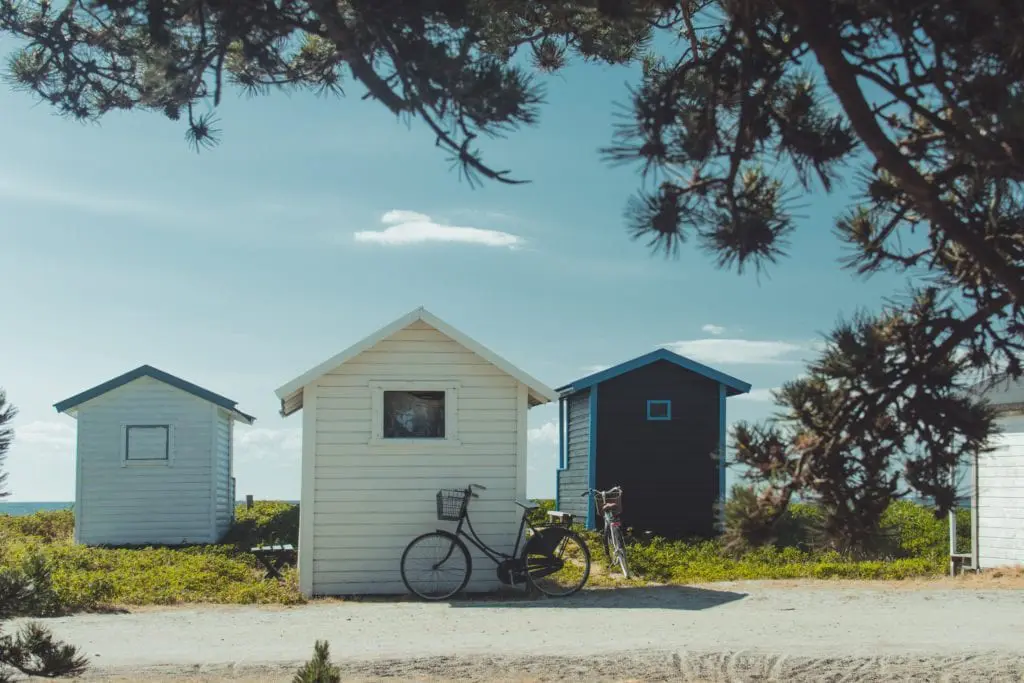
Tiny homes have been making headlines the last few years, but small as they are, some people still can’t wrap their brains around them. Getting rid of most of your things to live in a house where the bed is lofted above the kitchen and your closet is in the dining room? With a description like that, a little hesitation is understandable.
But going tiny is more than just downsizing; it’s an entire lifestyle change with the lure of simplicity and freedom.
First, a Bit of History
Living tiny isn’t a new concept. From yurts and gers in Central Asia, to Thoreau’s experience in Walden; or, Life in the Woods (1849), the idea of smaller spaces has been practical or appealing to humans for thousands of years.
As for modern interest, one name typically comes out on top. Jay Shafer, who founded the Tumbleweed Tiny House Company in 1999, is often credited with giving the movement the push it needed to become what it has today. He helped place tiny living in the limelight when his emphasis on civil disobedience and simple living, achieved by going tiny himself, got him coverage on The Oprah Winfrey Show in 2007.
Then, in 2008, the movement got another unexpected nudge: economic turmoil. As a result of the global financial crisis, many began to seek out financial freedom, particularly in their housing options. Enter the affordability of tiny houses.
Since then? Monetary benefits are still important, but intentional living is becoming a larger part of the goal for people who decide to go tiny. Being eco-friendly, living with less, and appreciating experiences more than “stuff” have all become drivers of the tiny home movement in recent years.
Who Even Likes These?
You may be reading this and thinking, “Okay, but I have three dogs, a pony out back, and enjoy working on cars in my spare time; tiny living is definitely not for me.” You’re probably right: it’s not a one-size-fits-all living situation. But there are two groups that do tend to gravitate toward tiny homes: Millennials and retirees.
Millennials, the largest generation ever, are bucking a lot of “adulting” norms. What could be more different from a two-story house with a white picket fence than a home on wheels you can drive across the country? Plus, the idea of being mortgage-free is a huge draw for a generation burdened with debt.
And the other major buyers? Roughly 40 percent of tiny home owners are older than 55. Some of the interest stems from a desire to save money, but tiny homes are also designed to increase mobility and independence — two things that are appreciated by the older generation, especially in retirement.
What’s in it for You…
As referenced before, saving money is the benefit people want most when going tiny. If you price out a brand new traditional home and a brand new tiny home, it’s clear which is less expensive. Plus, tiny homes typically come without the commitment of a mortgage, and utility expenses are lower than a traditional home.
Past the money, though, there’s the bonus of doing well by the planet. Not only do tiny houses require less energy, but the physical limitations of a small space help dwellers to minimize waste. Reigning in waste comes from critical shopping skills (you can’t exactly stockpile things when you only have two cupboards, so less is wasted) as well as renewable energy sources that are affordable and easy to manage with a smaller space. Either way, you have a chance to make a big difference on the environment.
And then, of course, there’s the intentionality behind seeking a freer life. Having fewer items cluttering up your space – and, by extension, your life – allows you to focus on the things that matter most.
…But at What (Metaphorical) Cost
Before you turn on Marie Kondo and start packing, you should know that while going tiny can be a huge positive shift, it isn’t always Instagram-perfect moments and quaint cottage life in the city.
For one thing, the logistics of living in a significantly smaller space can be tricky. Going tiny doesn’t just mean getting rid of excess; it can also mean going without some of the modern marvels you love. Dishwashers are typically sacrificed in tiny homes to save space and money, washers and dryers have to be compact, and plumbing can get tricky. And you can’t always get away with leaving the dishes on the counter to deal with later when that counter also serves as your gaming table and work desk.
Another drawback tiny-home owners often lament is the lack of privacy between housemates, as well as the restrictions when hosting guests. If you’re planning to live alone, the former likely won’t be of much concern for you. But nearly everyone (yes, even introverts) will run into the second issue. This isn’t to say you can’t friends if you go tiny, just that patience and some flexibility will take you far.
Finally: cost. No, I wasn’t lying earlier – tiny homes really are less expensive than regular houses. But there are few long-term financing options when it comes to tiny homes, so unless you can front the money, this could be a hindrance.
Positive Trends
Going tiny obviously isn’t for everyone, but those who wholeheartedly pursue it are quite taken with the idea. And some good news? The market is predicted to continue to grow, so you don’t have to worry about your tiny home options becoming limited anytime soon.
So what do you think? Could you make tiny living work, or does the idea send you sprinting in the opposite direction? Whether or not you’re ready to go small, check out NewHomeSource.com to find a home that’s the perfect style and size for you!

Kian Zozobrado joined Builders Digital Experience (BDX) in 2019 as a content writer. A graduate of Southwestern University with a degree in English, Kian is passionate about the written word and making connections. Outside of work, Kian also serves as president of the Board of Directors for the Writers’ League of Texas.
 What Your Legal Responsibilities as a Condo or Townhome Owner?
What Your Legal Responsibilities as a Condo or Townhome Owner?